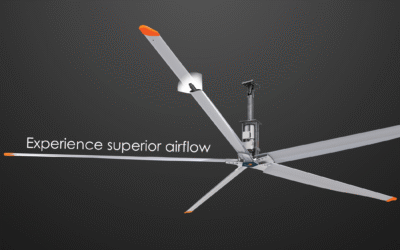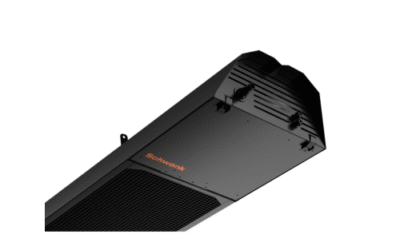Reducing the risk of Coronavirus infection in industrial buildings with infrared heating
Employers and employees have concerns about one fear: What is the risk of infection at work? Could the illness of an employee result in the forced closure of my company? Even with safe distances, regular surface disinfection, and part-time working models, including a home office in place—all of which have been considered suitable measures to reduce the risk of infection among employees. Other hygiene guidelines in offices and production buildings also require examination as part of the recovery planning, including building equipment such as heating systems.
SARS-CoV-2 viruses are carried by air movement
It is known that Covid-19 infections occur mainly via droplets and aerosols, i.e., micro-droplets produced while talking, coughing, and sneezing. When in contact with other people, we try to avoid this as much as possible by using masks. What works well outdoors can still become a risk in closed rooms. A study at the renowned Hermann Rietschel Institute for Heating and Ventilation Technology at the Technical University of Berlin on the transmission time of SARS-CoV-2 viruses in the air has produced interesting results on the length of time and distance traveled by the viruses. After 20 minutes, more than 50 percent of medium-sized particles (3 to 10 μm) were still found in the air.
“Larger particles sink to the ground airflow. Smaller particles follow the airflow and remain in the air for quite a long time,” says Prof. Martin Kriegel, Head of the Hermann Rietschel Institute, Department of Building Energy Systems. Kriegel goes on to say, “Another study shows that even larger droplets (>60 μm) can, under certain circumstances, spread far into a room. This is the case; for example, if the particles are emitted by a person, and it rises, spreads horizontally, and only then starts to settle. Possible horizontal air movements further intensify the spreading effect”. (Source: TU Berlin)
Does the healthier heater heat without air movement?
According to the studies, heating systems that work without air movement, such as radiant heating systems, can significantly reduce the risk of infection. The market leader for gas infrared radiant heaters, Schwank GmbH, sees a trend in this: “Many of our prospective customers now evaluate a heating system with a strong focus on minimizing spreading the risk of the coronavirus. Especially our luminous and tube heater systems, which do not move air, are experiencing a considerable growth of interest”.
Radiant heaters or tube heaters transfer heat utilizing electromagnetic waves, so-called infrared rays. Where the infrared rays strike, they convert into heat, the same principle as of the sun. Infrared heaters, therefore, do not require a carrier medium to transport their energy. The warmth is transferred from the heating system to the employee’s area without any air movement, unlike conventional heating systems, which is therefore very economical. Thus, radiant heaters avoid undesired air currents, dust movement, and heat cushions under the building’s ceiling.
Schwank North America
The name Schwank has been synonymous with high-quality and economical commercial/industrial heating systems for decades. As an industry leader in gas infrared heating and air curtain systems, Schwank has extensive experience, and we stand by our claim to deliver products and services of the highest quality and performance, with an ease of installation always top of mind. With Schwank, you rely on a premium trusted manufacturer.
CONTACT
+ 1-877-446-3727


